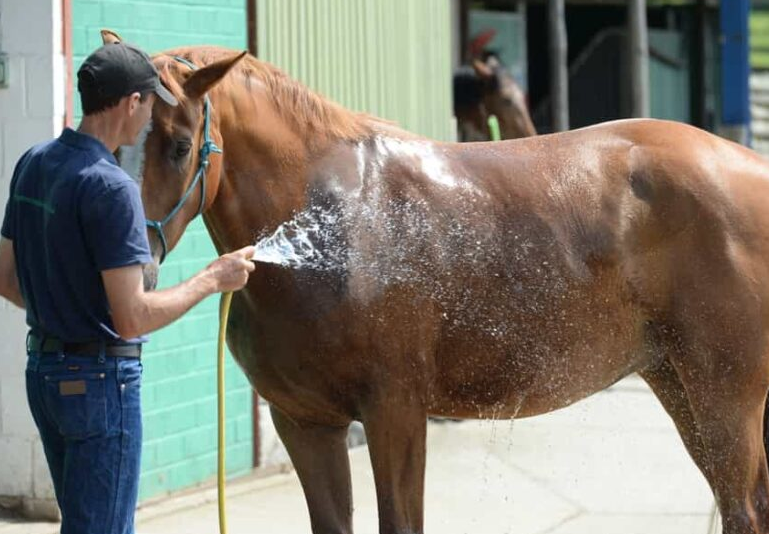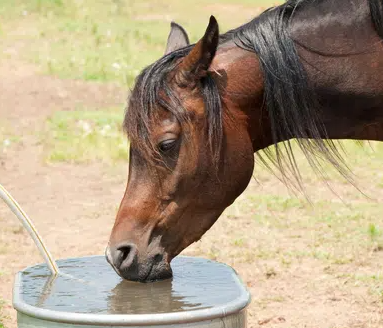Horses can sweat as much as three gallons per hour, a serious health management concern during the hot summer.
Thus, it becomes more important to ensure horses are drinking enough water to maintain good health. It is also essential to know when to back off an animal’s level of activity.
“Depending on the temperature and workload, a horse can become dehydrated in two hours,” said Kris Hiney, Oklahoma State University equine specialist.
Owners can suspect dehydration in their horse by recognizing the signs: sunken eye, dullness, dry skin and mouth, drawn up flanks, depression or excessive thick saliva.
A simple, but not always accurate way to judge dehydration in horses is to conduct a simple skin pinching test, Hiney said.
Skin should immediately return into its natural position. If the skin remains in a ridge from two-to-five seconds, this could be a sign of mild dehydration.
The average horse will intake five-to-ten-gallons of fresh water per day. Water is needed to avoid colic, dehydration, and death. Just like humans, different horses crave or need different water amount intakes.
“Cool fresh water should be offered to the horse often during strenuous activities,” Hiney said.

You can lead a horse to water, but you can’t make them drink. If where the water does not have the same taste as at home, the horse may refuse to drink.
“Before going to an event try flavoring the home drinking water with Gatorade or apple juice to accustom the horse to the flavor,” Hiney said.
For convenience of the horse owner, prepared powdered electrolyte packets can be added to drinking water to replenish necessary items.
Like humans, horses dissipate most of their excess body heat through sweating. When a person sweats, the electrolyte concentration goes up in the blood, resulting in thirst.
“However, a horse’s blood does not increase electrolyte concentration with sweat loss, so it may not be thirsty,” Hiney said.
Studies show horses will cool themselves normally if the heat index is less than 130. However, a heat index exceeding 150 requires cooling assistance.
“Cool water rather than very cold water should be applied inside of the legs and on the neck,” Hiney recommended. “Cold water can result in limited blood flow to the horse’s skin.” Continuous running water will help cool the horse faster.
Supplying fans or keeping the horse in an area with wind flow is ideal. Fans with higher velocities provide more effective cooling. Standing under shade trees allows a horse to radiate some heat to leaves.
Long trips may require schedule changes to avoid the hottest time of day. “The muscle work of balancing in a trailer during a road trip can put an additional heat load on a horse,” Hiney said.
“The rule of thumb,” Hiney said. “If you are consuming and desiring water, then the chances are the horse is also having the same desires.”

Riding horses is great exercise for the rider and also an additional strain on the horse’s metabolism. “Be safe and smart. Keep the horse hydrated, Hiney advised.